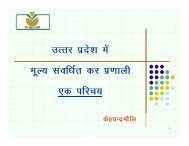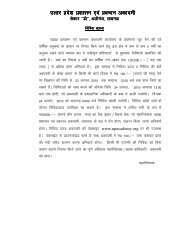Chairman PGC on PRIS - UP Academy
Chairman PGC on PRIS - UP Academy
Chairman PGC on PRIS - UP Academy
Create successful ePaper yourself
Turn your PDF publications into a flip-book with our unique Google optimized e-Paper software.
Panchayati Raj Instituti<strong>on</strong>s :potential and challengeMeenakshi Datta Ghosh<str<strong>on</strong>g>Chairman</str<strong>on</strong>g>Public Grievances Commissi<strong>on</strong>Nati<strong>on</strong>al Capital Territory of Delhi
Local governments arespecific instituti<strong>on</strong>s / entitiescreated …
y nati<strong>on</strong>al c<strong>on</strong>stituti<strong>on</strong>s (India, Japan,Brazil, France, Sweden, Italy, Denmark) by legislati<strong>on</strong> of a higher level of centralgovernment (the UK, New Zealand) by provincial / state legislati<strong>on</strong> (Pakistan,Canada) by executive order of the centralgovernment (China)
The strengths / infirmities of localgovernments;Their dialogue with higher levels ofgovernment, I believe,Lies in the modality adopted ab initio, increating them
India
BR Ambedkar defined the villagecommunity as ….“a sink of localism, a den ofignorance,narrow-mindedness andcommunalism”
Not surprising then, that `Panchayats’ did notfind a place in the First Draft of India’sC<strong>on</strong>stituti<strong>on</strong>.At the insistence of Gandhiji, a compromise wasagreed up<strong>on</strong>. The n<strong>on</strong>-justiciable DirectivePrinciples of State Policy included the following :“the state shall take steps to organise VillagePanchayats and endow them with suchpowers and authority as may be necessary toenable them to functi<strong>on</strong> as units of selfgovernment”.
It became clear that local self governmentcan be politically expedient, administrativelyc<strong>on</strong>venient, democratic and participatory. However n<strong>on</strong>e of the primary instrumentshad acquired the status and dignity ofviable and resp<strong>on</strong>sive people’s bodies The 73 rd and 74 th C<strong>on</strong>stituti<strong>on</strong>alAmendments provided the formal, legalinstituti<strong>on</strong>al reform
Main features of the 73 rdCAA 1992
ecogniti<strong>on</strong> of the Grama Sabha as a general bodyof electors at village level three tier PRIs for all States with a populati<strong>on</strong>exceeding 2 milli<strong>on</strong>, and two tier PRIs for Stateswith populati<strong>on</strong> less than 2 milli<strong>on</strong> c<strong>on</strong>duct of regular electi<strong>on</strong>s at 5 year intervals reservati<strong>on</strong> of seats for SCs and STs in proporti<strong>on</strong>to their popn, in the jurisdicti<strong>on</strong>
eservati<strong>on</strong> of <strong>on</strong>- third seats for women, includingin Offices of Panchayat Chairpers<strong>on</strong>s of all tiers c<strong>on</strong>stituti<strong>on</strong> of State Finance Commissi<strong>on</strong>s forexamining local body financial requirements, andrecommending to SGs, the rati<strong>on</strong>al devoluti<strong>on</strong> offinances to local bodies establishment of State Electi<strong>on</strong> Commissi<strong>on</strong>s forc<strong>on</strong>duct of local body electi<strong>on</strong>s setting up a District Planning Committee (DPC) toc<strong>on</strong>solidate plans of panchayats & municipalitiesinto the Draft Development Plan of the district (74 thCAA)
The CAAs of 1992 for the first time : assured permanence for local governments created fully representative local governmentstructures at three levels for rural areas andthree types for urban areas set up a combined representative expert body forintegrated district planning
Local government In India, in terms of the size of the electorate, the number of grass-roots instituti<strong>on</strong>s(a quarter milli<strong>on</strong> ), the number of pers<strong>on</strong>s elected (3.4 m. inPanchayats and NagarPalikas), and the empowerment of women at the grassrootsis the greatest experiment in democracy everundertaken anywhere in the world, or at anytime in HISTORY
Representati<strong>on</strong> of Women inLocal Government
The 73 rd C<strong>on</strong>stituti<strong>on</strong>al Amendment not<strong>on</strong>ly expanded and extendeddemocracy, but also engendereddemocracyAs a matter of nati<strong>on</strong>al policy, in 1992,women were mandated to occupy 33percent every level of localgovernment, inclusive of leadershippositi<strong>on</strong>s
Today 1.08 m. women stand elected toinstituti<strong>on</strong>s of local governance in ruralIndia, which translates into 36.88 % , asagainst a reservati<strong>on</strong> of <strong>on</strong>e - thirdBihar, MP, Chhattisgarh, Uttarakhand, HP andRajasthan have announced a 50 % reservati<strong>on</strong>for women in their States.SIKKIM will have a 40 % reservati<strong>on</strong> forwomen.
The Global Gender Gap Report 2007 <strong>on</strong> 128countries ranks India as :114 : <strong>on</strong> ec<strong>on</strong>omic participati<strong>on</strong> andopportunity for women116 : <strong>on</strong> educati<strong>on</strong>al attainment forwomen126 : <strong>on</strong> health and survival for womenBUT as21/128 : <strong>on</strong> political empowerment ofwomen, ahead of Australia, Canadaand the United States
The reservati<strong>on</strong> for women is an enablingmeasure. The ground reality is that this is hedgedby several formal, instituti<strong>on</strong>al c<strong>on</strong>straints <strong>on</strong> theireffective participati<strong>on</strong>. These include : the rotati<strong>on</strong> of seats no requirement for a quorum for women inGrama Sabha meeetings no c<strong>on</strong>fidence moti<strong>on</strong>s two child norm
Despite instituti<strong>on</strong>al and social c<strong>on</strong>straints, theparticipati<strong>on</strong> of EWRs has promoteddevelopmental and empowerment outcomes.Small gains are visible. Homes with EWRs gain enhanced socialrespect. Rigid patriarchal attitudes are getting slowlyeroded Women are more c<strong>on</strong>scious of their rights;morec<strong>on</strong>fident of their ability to withstand bullying; andto perform more effectively than the EMRs.
In lieu of focusing <strong>on</strong> c<strong>on</strong>tracts for more brick andmortar c<strong>on</strong>structi<strong>on</strong>, typically EWRs focus <strong>on</strong> : bringing piped water into the village bringing a middle school / high school into thevillage so that the girl child is able to completea school educati<strong>on</strong> promote the smokeless chullah, creches,community halls, playgrounds, seek counselingfor alcoholic husbands sp<strong>on</strong>sor the aucti<strong>on</strong> of village p<strong>on</strong>ds,community forests and village markets for thelarger welfare of the community, leading to adramatic increase in revenues.
ICT Enabled Panchayati RajPanchayats in the 21 st Century
Prime Minister Rajiv Gandhi was instrumental inaccelerating the pace of IT use at district levels.By 1990, the Nati<strong>on</strong>al Informatics Centre (NIC)implemented NICNET, c<strong>on</strong>necting districtcomputers to state / central level computers,through a satellite communicati<strong>on</strong> network15 standardised software applicati<strong>on</strong>s (districtwise),were developed centrally. Thereafter,districts were to create databases in theseapplicati<strong>on</strong>s, from which data could be retrievedfor central planning
The administrative culture resp<strong>on</strong>ded poorly.The initial impact of this computerisati<strong>on</strong> wasmodest.Slowly, the GIS and spatial mapping ofagri-climactic z<strong>on</strong>es began making planningmore need - based. Technology began to beviewed as <strong>on</strong>e enabler in the overall process ofreform.In 2005, GOI launched the NeGP (@ Rs. 300 bnover 5-6 years)
The Nati<strong>on</strong>al e-Governance Plan (NeGP) is coordinatinga country-wide effort to bring G to Cservices to the doorsteps of those with thehighest unmet needs.Within the NeGP, the Missi<strong>on</strong> mode project <strong>on</strong> ePanchayat (at an outlay of Rs. 35 bn), will bringservices for PRIs including accounting software,and computer - ised BPL lists. This will bring inaccountability and transparency in theFuncti<strong>on</strong>ing of PRIs. These back end services willcreate a state wide data base <strong>on</strong> service delivery.
The rural linkage fr<strong>on</strong>t end services are the100,000 Comm<strong>on</strong> Services Centres envisagedacross rural India, being set up with privateentrepreneurship and aiming to create accesspoints for <strong>on</strong>e out of six villages for the delivery ofe services. Some 36,000 CSCs are already in positi<strong>on</strong> as<strong>on</strong> 31 st March 2009. Government will build the networking structurewhich the CSCs will c<strong>on</strong>nect to locally.
Additi<strong>on</strong>ally, the NeGP includes a Missi<strong>on</strong> modeproject <strong>on</strong> eDistricts, which envisages providingseamless services to citizens. An eDistrict is <strong>on</strong>ewhere 75 % of services from the Collectorate areICT enabledFr<strong>on</strong>t end services will include facilitati<strong>on</strong>counters at district, tehsil, sub-divisi<strong>on</strong>, and blocklevelsGovernment is attempting to harness the fullpotential of the ICTs for development
Gujerat has been implementing e Gram through aSPV in a PPP model . E Gram services areprovided at a fee, which is shared by the VillageComputer Entrepreneurs and the VillagePanchayatGujerat is integrating the CSC with its own eGram Scheme (3000 + 3000) to cover its ruralpopulati<strong>on</strong> of 31 m.One CSC will cover three villages. Training andaccounting manuals are ready
Other States like Tamilnadu, Karnataka,Andhra Pradesh and Maharashtra haveprogressed significantly in applying ICTtechnologies in different ways, at PRI levels
The Gordian KnotsC<strong>on</strong>cluding Comments
The PRIs originally promoted in the 1950sc<strong>on</strong>tinued to be vibrant bodies for close to twentyYears, but commenced declining after the1970s,because they encountered hostility and insecurity fromentrenched vested interests (state levelMLAs, MPs and Ministers) about Panchayatsas alternate power centres at that time, Panchayats had noc<strong>on</strong>stituti<strong>on</strong>al sancti<strong>on</strong>
New lease of life for PRIs with the stand al<strong>on</strong>e1983 Panchayat Raj Act of Karnataka whichtransferred significant powers from the state levelto district and sub-district levels. Some of this generositywas subsequently rescinded (under different politicaldispensati<strong>on</strong>s), nevertheless this remained a landmark.The CAA 1992 was an initiative from the federalgovernment without any loss in power andauthority to itself, but required the federating units (stategovernments) to pass <strong>on</strong> substantial powers to localgovernments. The central government was drawing fromthe 1983 Panchayati Raj Karnataka Act
First Gordian Knot
Very few state governments have genuinelydevolved and decentralised functi<strong>on</strong>s,finances, and functi<strong>on</strong>aries to the three /two tiers of PRIs
Sec<strong>on</strong>d Gordian Knot
Central government <strong>on</strong> its part, c<strong>on</strong>tinues to create(and not wind up) parallel bodies to handle CSSs.It therefore bypasses both the state governmentsand the PRIs (especially in programmes involvingbilateral and multi-lateral aid).The logic is that when PRIs and state governmentslack both the competence and capacity, the centralgovernment may find it essential to implementnati<strong>on</strong>al objectives laid down in the Five YearPlans, through alternate arrangementswherever necessary.
On their part, state governments may not bealways giving adequate attenti<strong>on</strong> to criticalpriorities like educati<strong>on</strong>, health, managementof forests etc.
Gram Sabhas have become ineffective inexercising vigilance over the functi<strong>on</strong>ing ofPanchayatsParallel bodies ( JFMs and WUGs) workindependently of the Panchayats even thoughthe Eleventh Schedule specifies minor irrigati<strong>on</strong>,water management, minor forest produce aswithin the purview of Panchayats. These bodiesbegin to usurp the functi<strong>on</strong>s of the subject matterStanding Committees in the Panchayat.
The JFMs often have more financial resourcesthan the Village Panchayats who then fail toexercise any c<strong>on</strong>trol over the minor forestproduce.Technical / Expert Committees created tosupplement the capabilities of Panchayats arec<strong>on</strong>stantly undermining the Gram Sabhas andPanchayats.
Third Gordian Knot
The basic problem encountered by Panchayatsin the delivery of rural developmentprogrammes, is that they c<strong>on</strong>tinue to performan agency role.The CSS becomes the vehicle to empowerlocal bodies, and this is not prudentThis has stymied the emergence ofPanchayats as instituti<strong>on</strong>s capable ofperforming a more aut<strong>on</strong>omousdevelopmental role
This is leading to the “Tragedy of Comm<strong>on</strong>s”.The PRIs will remain inert and stifled if they arenot involved in the planning and implementati<strong>on</strong>of socio-ec<strong>on</strong>omic development.The local bodies c<strong>on</strong>tinue to functi<strong>on</strong> essentiallywith transferred funds from a comm<strong>on</strong> pool, andnot with funds raised locallyPRIs need assignment of revenue raisingpowers towards meeting their total expenditureresp<strong>on</strong>sibilities. Chicken and egg situati<strong>on</strong>
Public acti<strong>on</strong> campaigns such as ArunaRoy’s“Hamaara Paisa Hamaara Hisaab” drawattenti<strong>on</strong> to, and sustain interest &participati<strong>on</strong> in the potential role andresp<strong>on</strong>sibilities ofGram Panchayats and Gram Sabhas
Modul: LogistikaPředmět: Logistika ve sluţbách výzkumu a vývojese touto činností je výsledkem jejich sluţeb převáţně technická inovace (inovacevýrobku a technologie).Typologie služeb podle úlohy subjektů v inovačním procesu a zdroje stimulace Obrázek 6.1inovační aktivity 3tvorbainovačníchřešenínabídkovéstimulyvědecko –výzkumněorientovanésluţbysluţbyzaměřenéna tvorbuřešeníproblémupoptávkovéstimulyplošněposkytovanésluţbytrţněorientovanésluţbyvyuţitíinovačníchřešeníPlošně poskytované služby se vyznačují vysokým stupněm standardizace,který umoţňuje realizovat výnosy z rozsahu poskytování. Do uvedené skupiny sluţebspadají sluţby velkoobchodu a maloobchodu, opravy motorových vozidel a výrobkůpro domácnost.Tržně orientované služby se vyznačují zaváděním dílčích inovacív návaznosti na poţadavky trhu. Pro tento druh sluţeb je charakteristické vyuţíváníjiţ existujících inovací a jejich aplikace na k<strong>on</strong>krétní potřeby zákazníků. Do tétoskupiny můţeme zařadit sluţby v oblasti ubytování a stravování, dopravní,skladovací, poštovní a telekomunikační sluţby. Dopravu a skladování chápeme jakosoučást logistického řetězce a také jako logistickou sluţbu.Podle analýzy provedené Pazourem (2008) se v sektoru sluţeb inovuje méněneţ ve zpracovatelském průmyslu. Vysvětlení vidí autor v niţší inovační kultuřepodniků poskytujících sluţby (např. v oblasti stravovacích a ubytovacích sluţeb)3 Zdroj: [8], s. 11-15.- 44 -


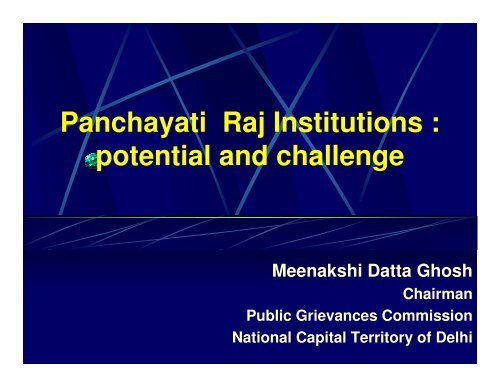
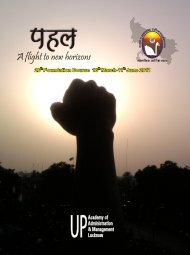
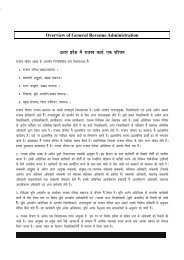

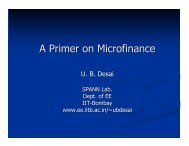
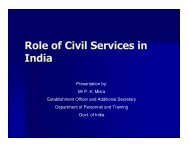
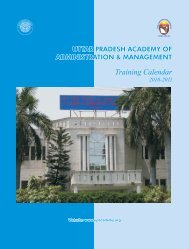



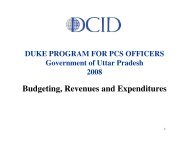
![m0iz0 iz'kklu ,oa izcU/ku vdkneh] - UP Academy](https://img.yumpu.com/32257946/1/190x245/m0iz0-izkklu-oa-izcu-ku-vdkneh-up-academy.jpg?quality=85)

